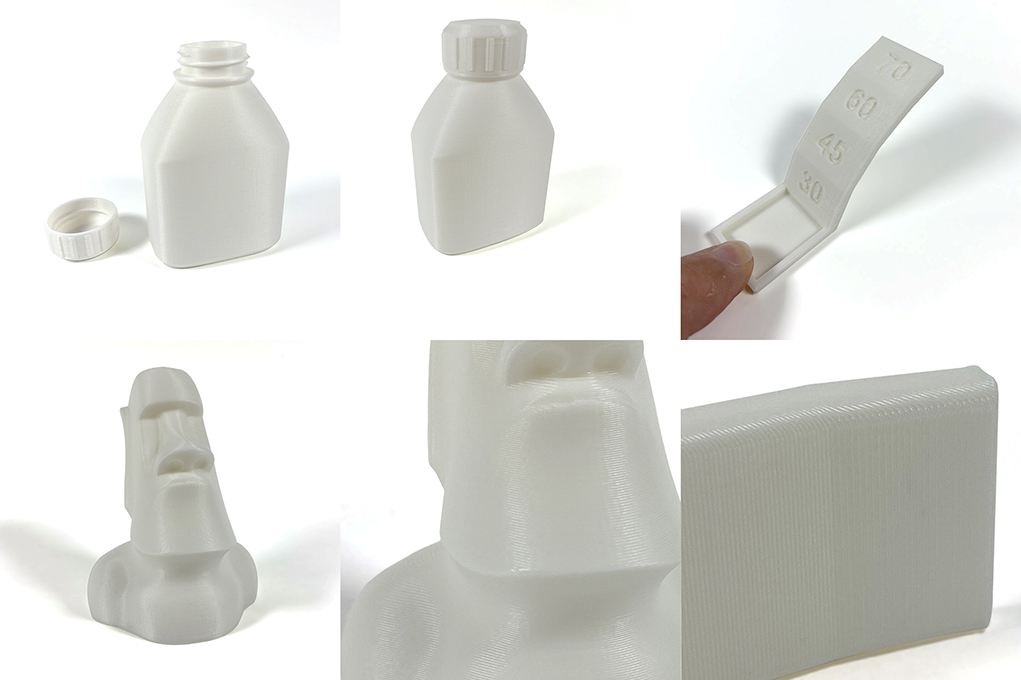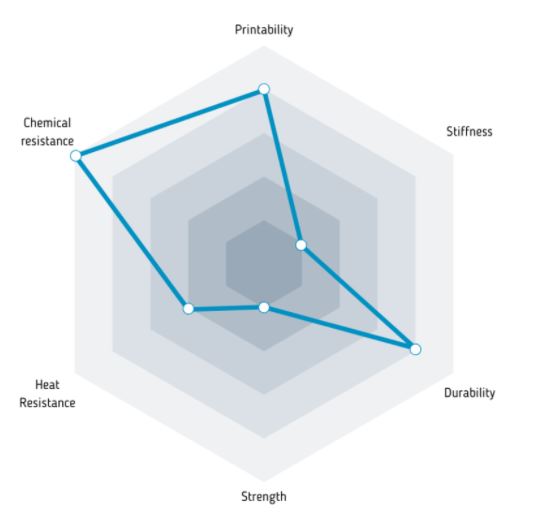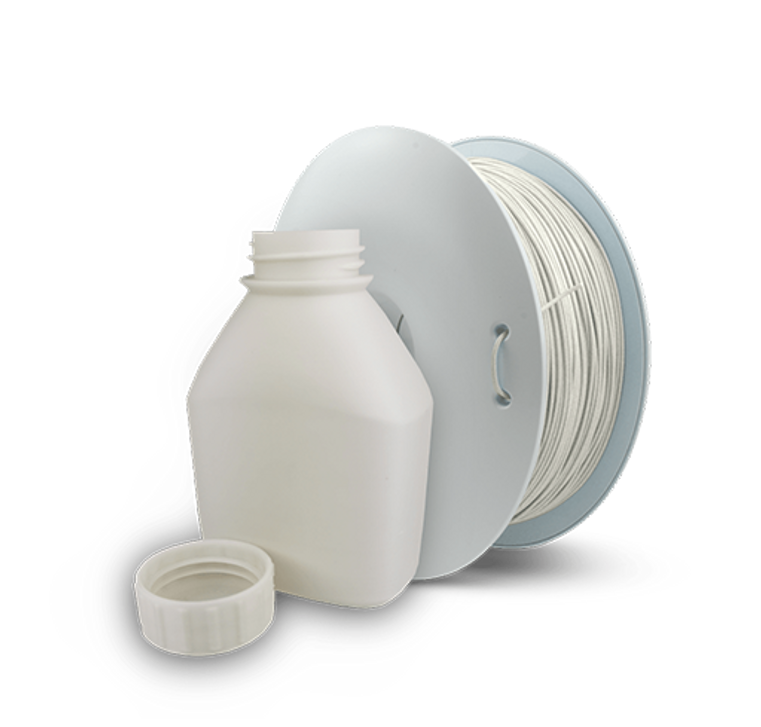Polypropylene

Strength and flexibility
Polypropylene (PP) is one of the most commonly used polymers in industry. Its high flexibility, incredible durability, low weight and resistance to chemicals have meant that it has found countless applications from medicine, through the automotive industry to the packaging industry. Fiberlogy PP filament has tapped the potential of this incredible material and made it possible to use in 3D printing.
The impressive tensile strength makes polypropylene perfect for producing elements that require durability while maintaining flexibility such as lockable containers, handles, etc. It is successfully used in both advanced engineering projects and at home.
Polypropylene is recyclable, which is why printouts and printer scrap can be segregated with other garbage and recycled, which perfectly reflects the spirit of the idea of “zero-waste”.
APPLICATION IN 3D PRINTING:
- DAILY USE ITEMS: boxes with closure, hangers, handles, fasteners, watch straps
- MOTORIZATION: bumpers, bumpers, covers
- TOYS: figurines, cars and their parts, drones
- KITCHEN ARTICLES: household appliances containers, dishes
- MEDICINE: test tubes, laboratory vessels
Properties:
- non-toxic and odourless
- high resistance to chemicals
- resistance to mechanical damage
- very good adhesion between the print layers
How to print?
The following parameters are only suggested print settings for this material. To ensure the best print quality, it is necessary to choose the appropriate settings for a specific printer and printing conditions.
| Nozzle Temperature | 220-250° | |
| Bed Temperature | 0-80° | |
| Closed Chamber | not required | |
| Fan | 0-50% | |
| Flowrate | 90-105% | |
| Printing Speed | <45 mm/s | |
| Surface | Kapton, Buildtak, Glass | |
| Retraction (direct) | 1-3mm | |
| Retraction (bowden) | 4-6mm | |
| Retraction Speed | 20-45 mm/s |


